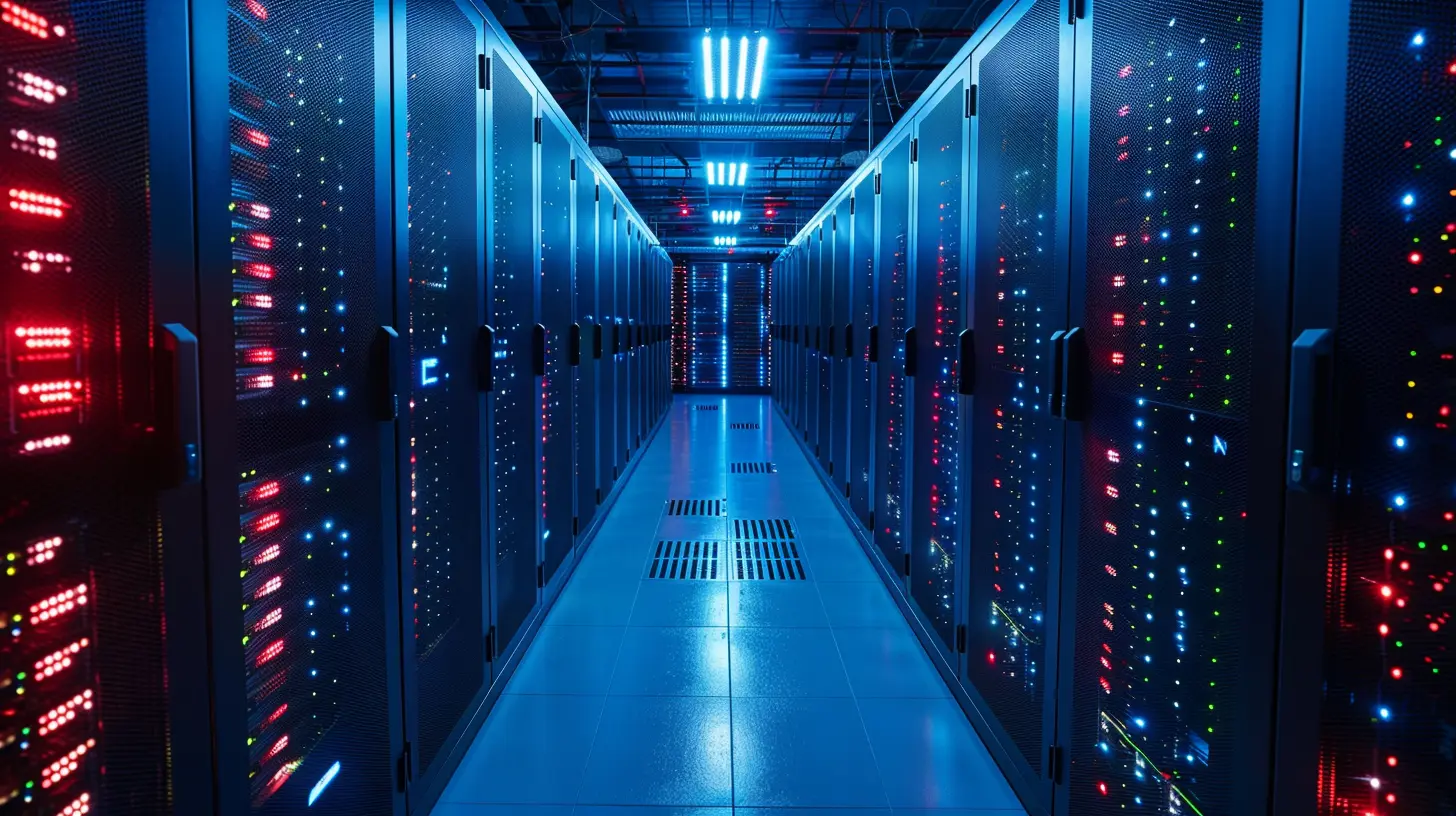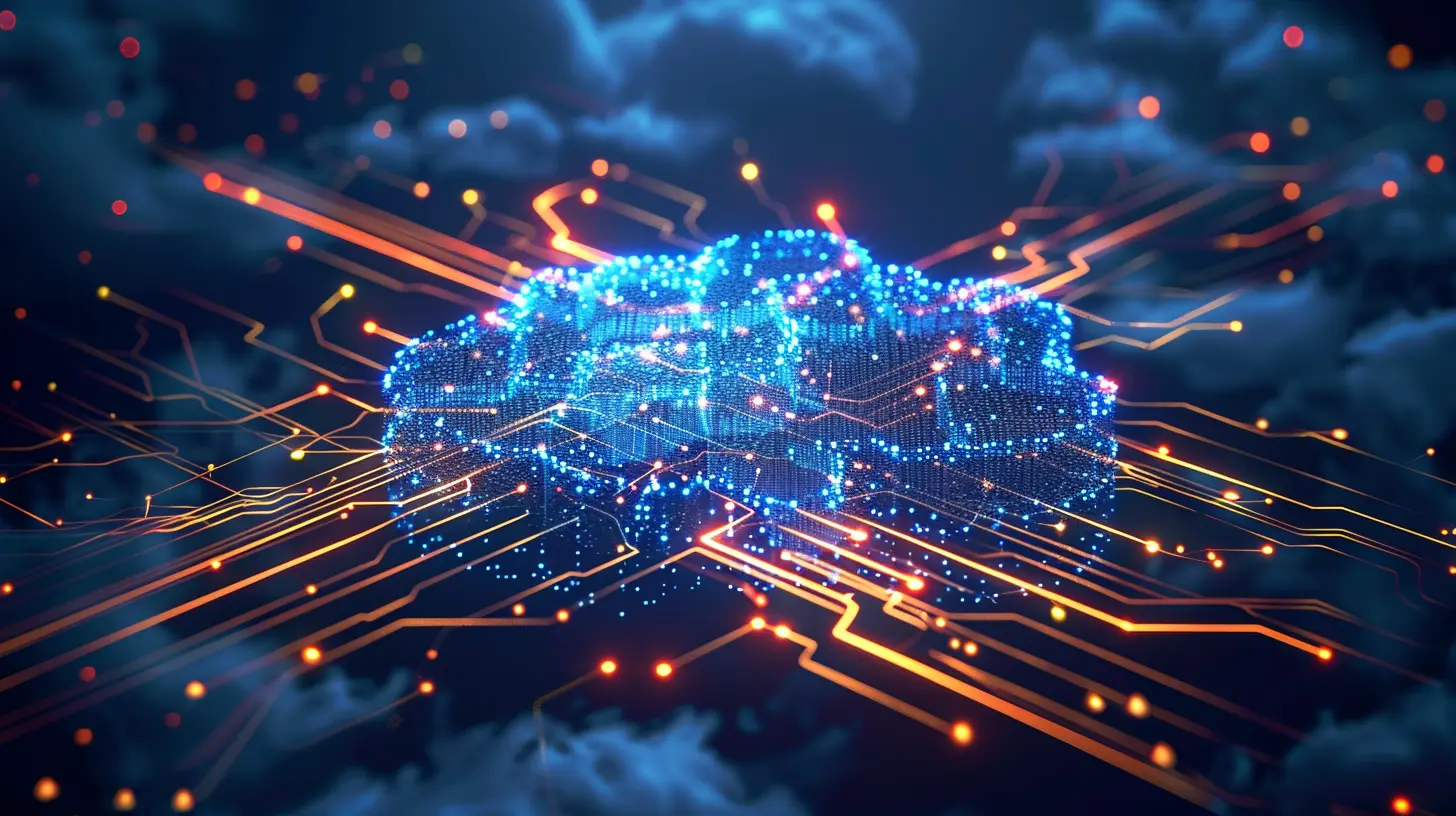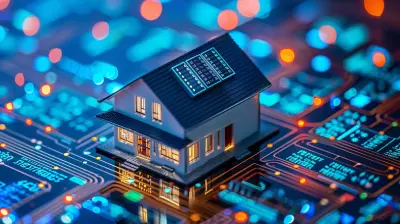The Rise of Edge Computing in a Hyperconnected World
29 June 2025
Let’s face it—the world is more connected than ever. From smart homes and wearables to autonomous vehicles and AI-driven factories, everything's talking to everything else. But here’s the kicker: our traditional cloud setups aren’t always fast or agile enough to handle this digital gossip in real-time. And that's exactly where edge computing steps into the spotlight.
In this article, we'll break down what edge computing is, why it's suddenly all the rage, how it fits into the bigger tech picture, and what it means for the future of our hyperconnected world. Whether you’re a tech geek or just someone curious about where we’re headed, you're in the right place.

What Is Edge Computing, Really?
Okay, let’s keep it simple. Edge computing is like having a mini-data center right around the corner from the device that needs it.Traditionally, whenever your smartphone, smart thermostat, or car needed to send or receive data, it had to send that info to a centralized cloud server, which might be hundreds or even thousands of miles away.
Now imagine doing that every single time it needed to make a decision. It’s kinda like asking someone across the globe whether your toast is done—slow and pointless, right?
Edge computing flips the script. It brings computing power closer to the source of the data—on “the edge” of the network, not in some far-off cloud farm. This means faster processing, lower latency, and reduced bandwidth use.

Why Is Edge Computing Taking Off Now?
Great question. It’s not like we just invented edge computing yesterday. But a few key trends have made it super relevant:1. Explosion of IoT Devices
By 2025, there will be more than 75 billion IoT devices around the world. That’s freaking huge! Your fridge, your car, that smart dog collar—they all generate massive amounts of data. Sending all that to the cloud? Not efficient.2. Demand for Low Latency
Think about self-driving cars. They can’t afford to wait seconds for instructions from a faraway cloud server. Every millisecond counts. Edge computing ensures decisions happen locally and instantly.3. Bandwidth Bottlenecks
With the amount of data we’re generating, our current networks are choking. Streaming 4K content, conducting Zoom calls, running smart factories—everything needs a ton of bandwidth. Edge computing helps ease the pressure by processing locally.4. Rise of 5G Networks
5G and edge computing go hand-in-hand. 5G offers insanely fast wireless communication, and when paired with edge computing, it allows real-time applications to run smoothly wherever we are.5. Privacy and Compliance
Sensitive data—especially in industries like healthcare and finance—may be better handled on-site rather than sent over the internet to a distant server. Edge computing supports data sovereignty and better control.
Real-World Examples of Edge Computing
Still wondering how edge computing shows up in real life? Let’s take a tour.Smart Cities
Imagine traffic lights that can adjust in real-time based on the flow of traffic. Sensors around the city collect data and edge devices immediately process that data to optimize traffic flow—all without waiting for cloud processing. We're talking smoother commutes and fewer emissions.Healthcare
In modern hospitals, edge devices can monitor a patient’s vital signs and trigger alerts instantly if something’s off. No need to send this critical data to a remote cloud first. This promises faster life-saving responses.Manufacturing
Smart factories use sensors and robots that need to react in microseconds. Edge computing allows real-time adjustments on the production line. Think of it like a brain installed right on the factory floor.Retail
Edge computing helps retailers manage inventory in real-time, analyze customer behavior on the spot, and even provide personalized discounts while customers are still shopping.Autonomous Vehicles
Self-driving cars process insane amounts of data per second—from traffic patterns to pedestrian movement. Sending all that to the cloud? Forget about it. Edge computing helps the vehicle make snap decisions locally.
The Tech Stack Behind Edge Computing
So what makes edge computing tick? Here’s a breakdown:Edge Devices
These are the gadgets that produce or process data at the edge—think smart sensors, cameras, and routers.Edge Servers
Miniaturized servers installed near the data source. They do the heavy lifting in terms of processing, storage, and networking.Edge Gateways
They act as a bridge between local devices and central systems. Gateways preprocess data and decide what needs to go to the cloud.Orchestration Tools
Managing thousands of edge devices? Yeah, that gets messy. Orchestration tools help automate, monitor, and secure the whole setup.Benefits of Edge Computing That You Can’t Ignore
Let’s break down the top reasons businesses and developers are jumping on the edge computing train.Blazing Fast Processing
By cutting out the long trip to the cloud, edge computing lets devices make lightning-fast decisions. Perfect for mission-critical applications.Reduced Costs
Less data traveling back and forth means lower bandwidth costs. Also, less reliance on expensive, centralized cloud storage.Improved Reliability
Even if the internet goes down, edge devices can still process and react locally. That’s a huge win for uptime.Stronger Privacy
Processing data on-site reduces the risk of interception during transit and helps meet regional compliance requirements.
Challenges of Edge Computing (Because Nothing’s Perfect)
Of course, it’s not all sunshine and rainbows. There are a few bumps on the road.Security Risks
More devices = more attack surfaces. Each edge device needs tight security or risk becoming a hacker's playground.Management Complexity
Keeping tabs on potentially thousands of edge nodes scattered across the globe? Not exactly a walk in the park.Compatibility Issues
With so many types of devices and protocols, integrating everything doesn’t always go smoothly.Limited Resources
Edge devices don’t have the computational muscle of central servers. Certain tasks may still need to be pushed to the cloud.Edge Computing vs. Cloud Computing (It’s Not Either-Or)
Here’s a misconception: edge computing will kill cloud computing. Nope. They’re more like peanut butter and jelly—better together.Cloud computing is still perfect for data-heavy processing, storage, and analytics. But for real-time, latency-sensitive tasks, edge computing takes the lead.
Many companies are adopting a hybrid approach: use the edge for immediate processing and the cloud for longer-term storage and analysis.
The Future of Edge Computing
So, where do we go from here?We’re entering an era of unprecedented connectivity. Drones, robots, AR/VR, smart glasses—these technologies need super-low latency. Edge computing is the backbone that will support them.
Plus, with advancements in AI at the edge (aka Edge AI), we’ll see smarter, faster, and more autonomous devices that don’t need to “phone home” for every little task.
And as 6G, satellite internet, and more robust computing hardware emerge, expect edge computing to become even more mainstream—like Wi-Fi or cloud storage today.
Should You Care About Edge Computing?
Absolutely.Edge computing isn’t just tech jargon. It’s becoming a key player in how we interact with the digital world. Whether you’re a developer, business owner, data analyst, or just a curious human—understanding edge computing gives you a glimpse into the future.
We’re building a world where technology doesn’t live in some distant, digital castle in the sky—it lives right next to us, in our homes, cars, and workplaces. And honestly? That’s pretty exciting.
all images in this post were generated using AI tools
Category:
Digital TransformationAuthor:

Jerry Graham
Discussion
rate this article
1 comments
Runehart McVaney
Great article! It's fascinating to see how edge computing is shaping our digital landscape. Excited to learn more about its potential impact on connectivity and efficiency.
July 11, 2025 at 12:25 PM

Jerry Graham
Thank you! I'm glad you enjoyed the article. Edge computing truly is a game changer for connectivity and efficiency!


